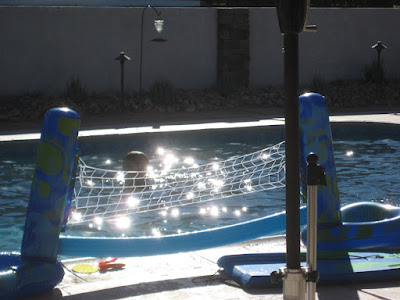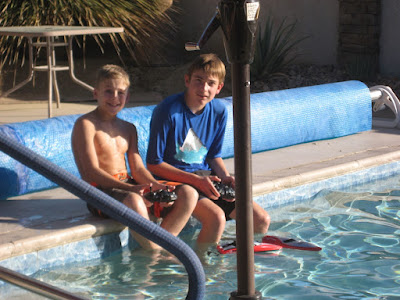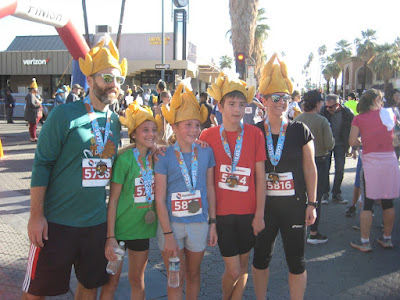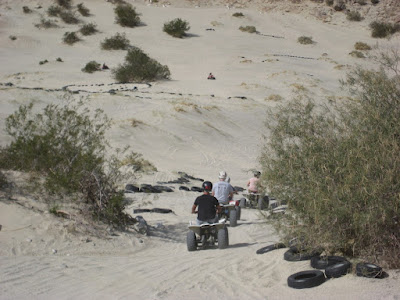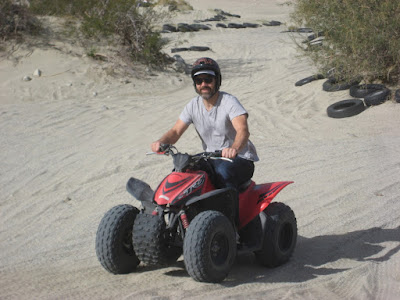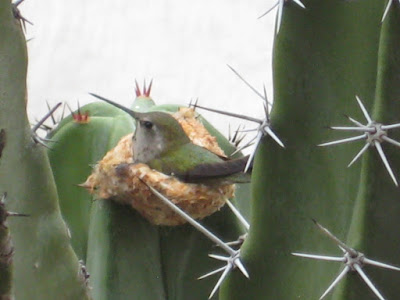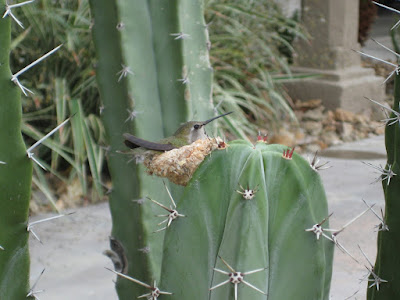The
equation has forever changed. Sharon and I are no longer baby-sitting the
grandchildren. At ten, twelve and fifteen respectively, they’ve moved past the
need for constant adult supervision. At this stage in their young lives, Sharon
and I feel that life experiences were far more important than material things.
When
both families came to Palm Springs to celebrate Thanksgiving, the adults agreed
that we would not venture out unless it was for something special. That worked
out well for all of us, but especially the children.
What
better way to acknowledge their growing up than to create a dorm-like setting
for them instead of bunking with their parents. Sharon decided to take one of
our bedrooms we labeled as the ‘purple room’ because of the decor and turn it
into the ‘quiet room.’
We
assembled six bunk beds, had new paint and carpeting, drawers for their
clothes, a night light and a reminder on the credenza that this was ‘The Quiet
Room’. It worked. When the kids hit their beds, they were out in minutes.
Then
the experience chain began each morning when a different child was paired with
an adult to make breakfast. That new tradition continued on for lunch and
dinner. The kids were expected to set the table, lay out the dishware and help
prepare the meal.
As a
special treat, the kids then made four different types of candy for our guests
at the third annual scripted-reading of a new play that Papa wrote just for the
occasion. Each guest was given a box of candy as they left the performance.
For
our thanksgiving meal, Nana brought out her finest china and crystal and the kids
learned how to set a table; positioning the china, silverware, crystal, etc.
This
year with one child in high school, three in middle school and one in grade
school, Nana decided it was a good time for them to start thinking about
college and how to prepare for it. So, she held a class in resume writing.
The
lesson covered resume-writing, how to prepare for a test, how to apply for
college, asking for reference letters, the question of academics vs. the arts
vs. athletic endeavors. In addition, there was an assortment of other topics
all geared to making them ‘think’ about how to prepare for college.
To
lighten the pace, there was a lot of poker playing for skittles.
Our
pool, once again, proved to be the highlight of their visit. The kids found dozens
of ways to use pool pads, boogie boards and other toys for made-up games.
New this
year were several remote-controlled speedboats.
Continuing
a tradition, several family members ran in the Annual 5k Palm Springs Turkey
Trot (three mile) race in downtown Palm Springs.
But
the highlight of the week was riding dune buggies for all five grandchildren
AND our own two kids.
Maya put a little video clip together to capture the excitement the kids felt flying across the dunes.
The entire week was full of activities designed to inform, educate, entertain, and draw family members together. It only happens once or twice a year and it’s a wonderful exercise in family bonding. We are all very fortunate in being able to do that.
As an added bonus, Melanie and Amy (the moms) took a lot of their own pictures. Here are some of their best.
















